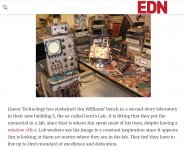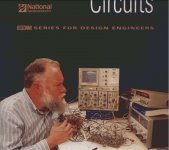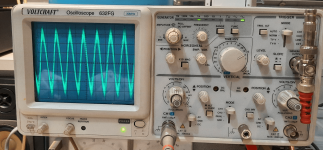Maybe this model could be an alternative to the no longer available Topping D90 equipped with AK4499
https://www.audiosciencereview.com/...ds/topping-d90-balanced-usb-dac-review.10519/
As you can see on the attached images, the very small black box contains the whole SMPS - go to image No 5.
Would it be better to replace it by an outdoor shunt regulated power supply with 50/60 Hz transformer ?
Thanks for comments.
Some URLs:
https://www.audiosciencereview.com/.../smsl-m400-balanced-usb-mqa-dac-review.13732/
https://www.pttweb.cc/bbs/Headphone/M.1634053354.A.1DF
https://ptthito.com/headphone/m-1629808628-a-ea4/
https://www.audiosciencereview.com/...ds/topping-d90-balanced-usb-dac-review.10519/
As you can see on the attached images, the very small black box contains the whole SMPS - go to image No 5.
Would it be better to replace it by an outdoor shunt regulated power supply with 50/60 Hz transformer ?
Thanks for comments.
Some URLs:
https://www.audiosciencereview.com/.../smsl-m400-balanced-usb-mqa-dac-review.13732/
https://www.pttweb.cc/bbs/Headphone/M.1634053354.A.1DF
https://ptthito.com/headphone/m-1629808628-a-ea4/
Attachments
-
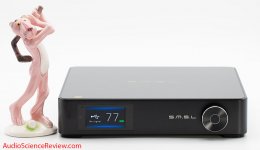 SMSL M400 USB DAC XLR Balanced Audio Review.jpg43.9 KB · Views: 331
SMSL M400 USB DAC XLR Balanced Audio Review.jpg43.9 KB · Views: 331 -
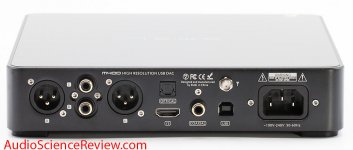 SMSL M400 USB DAC XLR Balanced Back Panel Inputs Outputs XLR RCA Audio Review.jpg51.2 KB · Views: 352
SMSL M400 USB DAC XLR Balanced Back Panel Inputs Outputs XLR RCA Audio Review.jpg51.2 KB · Views: 352 -
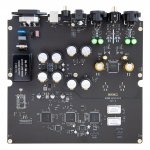 11230448.jpg557.5 KB · Views: 530
11230448.jpg557.5 KB · Views: 530 -
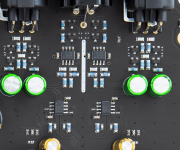 SMSL-400_close_up.png847.4 KB · Views: 393
SMSL-400_close_up.png847.4 KB · Views: 393 -
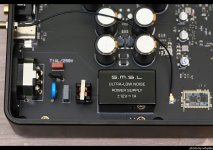 cQMiTsP.jpg155.7 KB · Views: 398
cQMiTsP.jpg155.7 KB · Views: 398 -
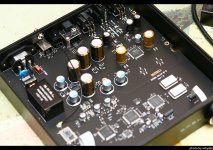 wJs5FwX.jpg193.5 KB · Views: 525
wJs5FwX.jpg193.5 KB · Views: 525 -
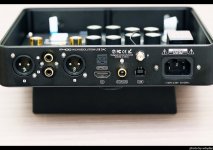 jYOFIEn.jpg147 KB · Views: 3,204
jYOFIEn.jpg147 KB · Views: 3,204 -
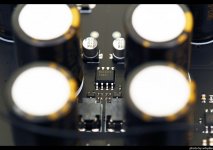 bmQQyh9.jpg111 KB · Views: 303
bmQQyh9.jpg111 KB · Views: 303 -
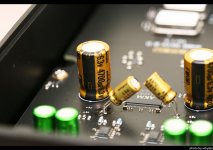 do9CZRr.jpg135.2 KB · Views: 342
do9CZRr.jpg135.2 KB · Views: 342 -
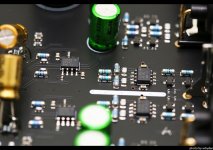 hzjrftZ.jpg154.4 KB · Views: 312
hzjrftZ.jpg154.4 KB · Views: 312 -
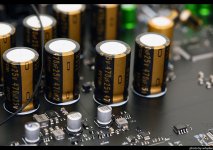 F83Wl81.jpg163.6 KB · Views: 308
F83Wl81.jpg163.6 KB · Views: 308
Last edited:
Maybe. The power for digital circuitry might be okay as is. Power for Vref, clocks, and or output stage might benefit from cleaner/better power. Some of those things may or may not have secondary linear regulators that could continue to influence the sound despite some improvement in first stage power supply performance. In other words, it you can sketch out a schematic of various voltage regulators and power rails, then it might sense to formulate a test plan to see if the sound can be improved. The other thing that may make it sound better is to send it DSD256, even if its upsampled and converted from 16/44 PCM. That possible improvement is easy to test as it can probably be done entirely in software.
Better in terms of what? What is wrong with it?
According to the measurements at ASR there is not even a hint of 50/60 Hz mains hum, so there doesn't seem to be anything to improve in this area.
You might be able to improve the noise by a couple of dB by using all 4 DAC outputs and 4xOPA1612 for the I/V stages. But you probably also need to change the programming of the DAC and add additional suppy lines to the DAC, so hardly possible/worth it.
According to the measurements at ASR there is not even a hint of 50/60 Hz mains hum, so there doesn't seem to be anything to improve in this area.
You might be able to improve the noise by a couple of dB by using all 4 DAC outputs and 4xOPA1612 for the I/V stages. But you probably also need to change the programming of the DAC and add additional suppy lines to the DAC, so hardly possible/worth it.
Apart from the small electrolytic caps halfway in the air (is this original BTW?), this looks very well, just like the other Chinese DACs like Topping.
It would be interesting to know what is inside the black box though.
I noticed they tend to cheap out on the power supply by not adding second stage filters after SMPS, which is a pity. Once I added such a filter, which is rather complicated. The result was a dramatic reduction in switching noise on the DC power supplies, but this did not translate to any improvement in measured FFT.
It would be interesting to know what is inside the black box though.
I noticed they tend to cheap out on the power supply by not adding second stage filters after SMPS, which is a pity. Once I added such a filter, which is rather complicated. The result was a dramatic reduction in switching noise on the DC power supplies, but this did not translate to any improvement in measured FFT.
I moded both first loxije than smsl. It is not so easy to say what is better what is good... my opinion Loxije was too soft undynamic, rounded bass,.. smsl is too light, more transparent no authority... if you think the same and want to change it than we can share some ideas. First hint...solve oscillation on TVDD 3,3v regulator on left lower side of ak4499. Than play with RR 10R-10R vref resistor values. Datasheet says 1R and 1R...dynamics goes up dramaticly.
Space is very limited therefore i use another enclosure for transformers and inside smsl dac are 4 new linear regulators for +-12v and 2x 5,6v.
Space is very limited therefore i use another enclosure for transformers and inside smsl dac are 4 new linear regulators for +-12v and 2x 5,6v.
EMI/RFI? Transient response? Linearity?Better in terms of what?
Some of those things don't show up so well on a typical audio FFT whereas mains hum is easy to see. WYSIATI ?
Do they seriously ship this with an oscillating regulator? What is the root cause for oscillation and how to fix it?First hint...solve oscillation on TVDD 3,3v regulator on left lower side of ak4499.
All this things are already measured trought several people.... and are suprisingly good. But sound is not. For my taste. I have really a lot of gear to hear and my taste is maybe different than others. I like Total dac, Also rockna Signature balance and SE are ok, Wavelight not, Msb Analog is ok but nothing special,, Rega Valve Isis is also nice to hear, but too coloured, Saturn not good. Esoteric K03 shy, Metronome la player 3+to polite and boring but technicaly good. similar like Esoteric. Acoustic art tube dac II mk2 artiffical, bright. That is maybe last year to remember. Not write some topping, smsl, musical fidelity, project, audiolab dacs. It is very hard to modify things that are limited spaces, 5layer, 0402 or 0603 parts.... i will rather say optimized it that you like it, if original mesurements are excellent like SMSL m400.
But has anyone established for a fact that there is a problem with EMI/RFI from the mains power supply?EMI/RFI? Transient response? Linearity?
Some of those things don't show up so well on a typical audio FFT whereas mains hum is easy to see. WYSIATI ?
Typically that would affect other devices in the vicinity, not necessarily the DAC itself.
Before I attempt to solve a problem I prefer to know what the problem is. Otherwise it is just guesswork.
Its not unusual to try a good linear PSU and find the sound has improved in some way, maybe cleaner, smoother, more dynamic, etc. Often not a hard experiment to do. If it helps in some way it would be great to try to measure why exactly. IME EMI/RFI noise might look fairly benign on an FFT. Maybe a slight change in the noise floor going from SMPS to linear. Noise floor shift with and without an audio signal might change a little too. Problem is we don't have a number to say this okay or its not okay. There are no standard figure of merit numbers for some these effects, especially not numbers that correlate well with a given subjective perceptual change in sound. One of the hardest things to get right might be a combination of characteristics: low-midrange full rather than thin (chest voice warmth/resonance), highly resolved HF sounds (e.g. precise/undistorted complex details of cymbal sounds, not just a shhhhhh sound, etc.), soundstage (wide and deep, narrow and forward, etc.), and imaging (precise and stable location of an instrument/vocalist in space according to the stereo illusion). No exact metric, have to listen.
Bottom line is do an experiment and listen, get other people to listen, etc., and see what you think, or else don't. Another option might be to borrow a really good dac, a Chord, a Mola Mola, a Holo May, etc., and compare the sound with the dac you are working on. Does it sound like real music? Can you enjoy listening for hours and hours without wanting to quit and go do something else?
Bottom line is do an experiment and listen, get other people to listen, etc., and see what you think, or else don't. Another option might be to borrow a really good dac, a Chord, a Mola Mola, a Holo May, etc., and compare the sound with the dac you are working on. Does it sound like real music? Can you enjoy listening for hours and hours without wanting to quit and go do something else?
Last edited:
Much of the EMI/RFI is radiated from e.g. Wifi, cellphones, led/fluorescent lamps. External linear PSU can easily pickup EMI/RFI. And tweaking stuff by adding separate boards (e.g. regulators, output stages) and hanging them by wires is a sure recipe for EMI/RFI pickup either internally within the device or from external sources. Another often seen source of EMI/RFI or jitter is to use non-shielded wires on pin headers instead of coax cables for I2S signals.
I would suggest to put it all in well shielded steel case like I do.
BTW, theory says coax is better. However experimental tests with u.fl connector coax showed problems with RF ground loops in I2S signals. Easily illustrated with boards that have both pin headers and u.fl connectors. Tried it with more than one type of board. Loosely twisted pairs over short distances with distributed TL damping was found to work best. Those loosely TP wires were also placed in a well shielded location between a DSP PCB ground plane and steel case wall. No measurable RFI/EMI from those wires was found at the dac board.
BTW, theory says coax is better. However experimental tests with u.fl connector coax showed problems with RF ground loops in I2S signals. Easily illustrated with boards that have both pin headers and u.fl connectors. Tried it with more than one type of board. Loosely twisted pairs over short distances with distributed TL damping was found to work best. Those loosely TP wires were also placed in a well shielded location between a DSP PCB ground plane and steel case wall. No measurable RFI/EMI from those wires was found at the dac board.
Last edited:
Theory is correct. Once again you are generalizing an issue related to implementation flaw. Properly implemented boards have terminating impedances for coax cables which minimize reflections and jitter. Pin headers and wires do not have proper termination and are prone to EMI/RFI pickup.BTW, theory says coax is better. However experimental tests with u.fl connector coax showed problems with RF ground loops in I2S signals.
It has been explained to you that there is more than one way set up lab experiments. I consider my AK4499 dac to be an ongoing lab research project. As such, shielding, noise sources and stray coupling are well controlled. You would probably be shocked at how bad it makes your pretty looking dac sound in comparison. Now, if I were designing a commercial production dac it would obviously not look like a lab project.
Both dacs have same result on TVDD pin. This was for me unacceptable before going on with any other mod. I did some dacs with ak4490, ak4495, measured also ak4497modified toping and dx3pro ak4493 and noone had such oscillation. 10uf 1206smd x5r before and after regulator solve the problem. Because 90% of the dac is supplied from very noisy switching regulator. At loxije i put one FB before 10uf to damp a little bit switching noise, not in smsl because there was changed to tps7a4700. Switching regulators are not bad in proper places but in this dac it is no place for such a regulator.
We sholud go on with sms m400- loxije d50 and talk about more specific solution. I have never wrote that my moded dac is better than stock. It plays different and more close to "adult" dacs that i compared with.
We sholud go on with sms m400- loxije d50 and talk about more specific solution. I have never wrote that my moded dac is better than stock. It plays different and more close to "adult" dacs that i compared with.
Attachments
This is the question (not only for me). But this I don't know.Better in terms of what? What is wrong with it?
My experience with comparisons of high frequency SMPS vs. 50/60 Hz power supplies on other audio devices provide still better results with 50/60 Hz transformer, rectifying and regulation (best results by use of shunt regulation).
Example is the phono RIAA pre-amp iFi iPhono2 - go to post #28 + #39 under
https://www.diyaudio.com/community/...-creating-schematic-help-needed.325728/page-2.
Results with additional very high capacity elcaps like use in an old German DAC equipped with PCM63 are excellent in general - go to images of post #12 under
https://www.diyaudio.com/community/...te-dac-horch-steps-1-schematic-wanted.345211/
I used to think some years ago, that modern SMPS approaches should provide at least the same sonic quality because of the high-frequency transformers (1-5 MHz instead of 50/60Hz - i. e. no audible unwanted 100/120Hz hum).
Unfortunately, the opposite was always the case while listening tests I attended.
But I want to have a small SMPS with same result like large 50/60Hz transformer, shunt regulated voltage regulator and large capacitors.
Maybe SMPS versions with modern design (TI applications etc.) and from currently manufacturing (Hypex) provide perfect sonic results - go to
https://www.diyaudio.com/community/threads/how-to-design-a-high-quality-smps.357782/
https://www.diyaudio.com/community/threads/smps-in-audio.378431/
https://www.diyaudio.com/community/threads/smps-for-hi-fi.45589/
https://www.diyaudio.com/community/threads/switched-mode-power-supplies-smps.158604/
https://resources.pcb.cadence.com/b...ing-power-supply-advantages-and-disadvantages
https://www.st.com/resource/en/datasheet/l6599a.pdf
https://training.ti.com/high-effici...-supply-design-introducing-new-technologies-0
Here some examples for good sonic results according several guys (I haven't heard):
https://funk-tonstudiotechnik.de/SMPS-14T-Info-2-spaltig.pdf (maybe good replacement for the cheap +/-12V black box of M400 D/A converter)
https://funk-tonstudiotechnik.de/SMPS-12-2006.pdf
https://groupdiy.com/threads/filtering-switch-mode-ripple.36561/page-2
https://hifiduino.wordpress.com/2011/02/26/resonant-smps-for-audio/
https://connexelectronic.com/product/smps300re/
Last edited:
- Home
- Source & Line
- Digital Line Level
- S.M.S.L. M400 (AK4499EQ) - Is there any Advantage to Replacing the small Internal Power Supply Module
